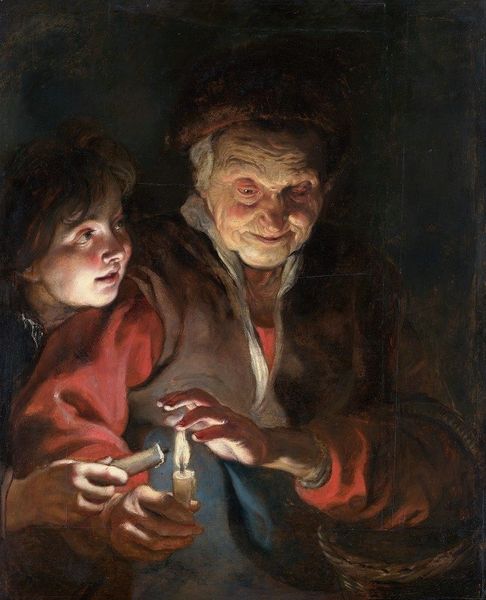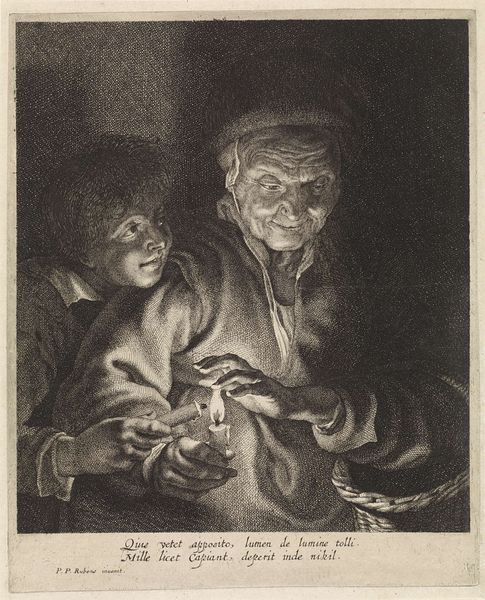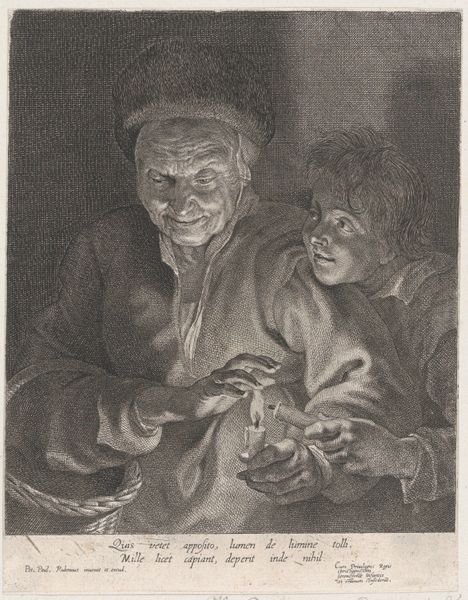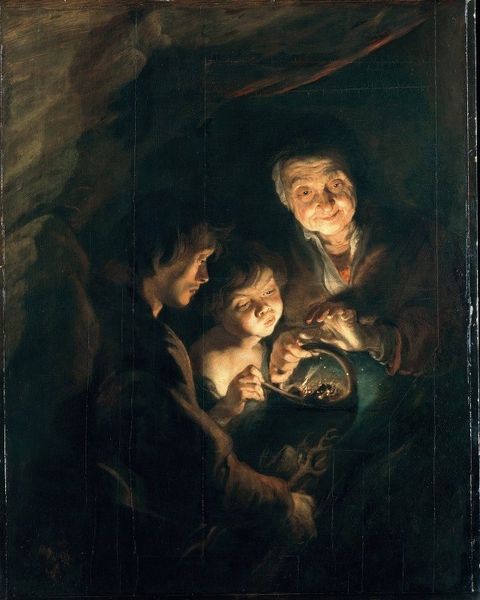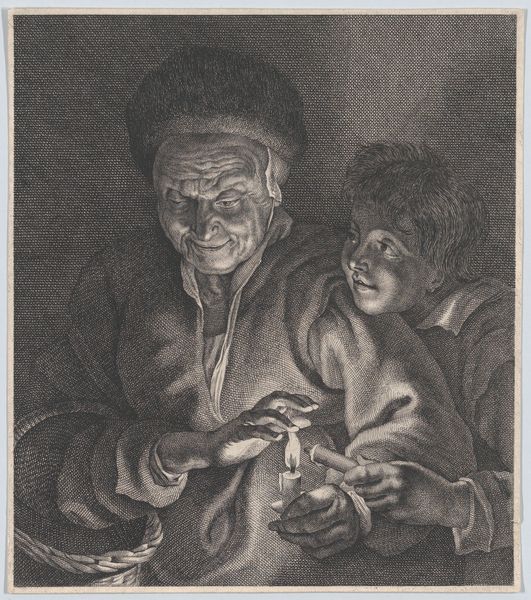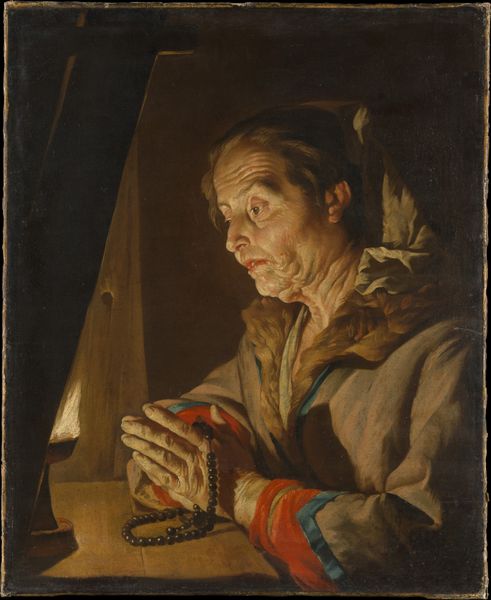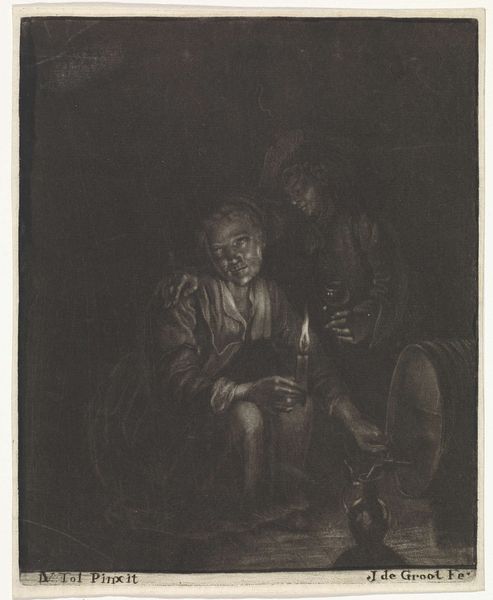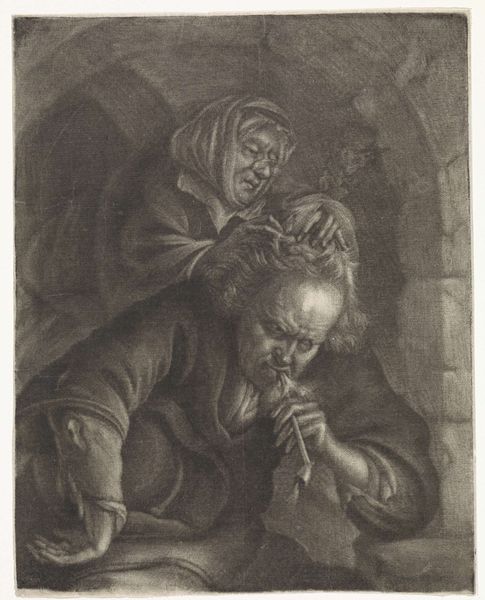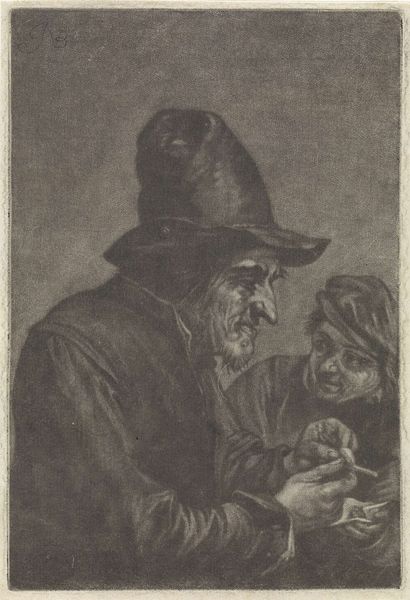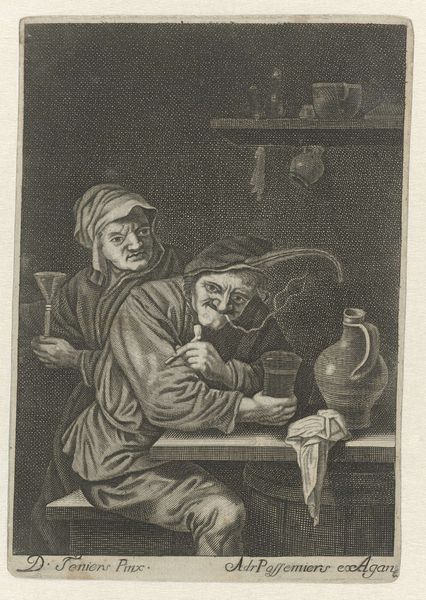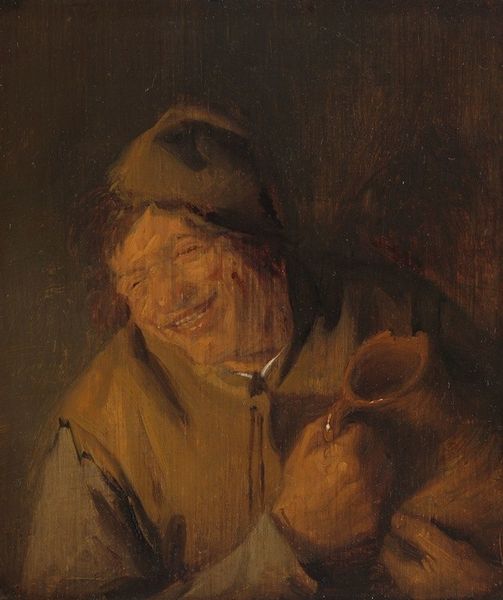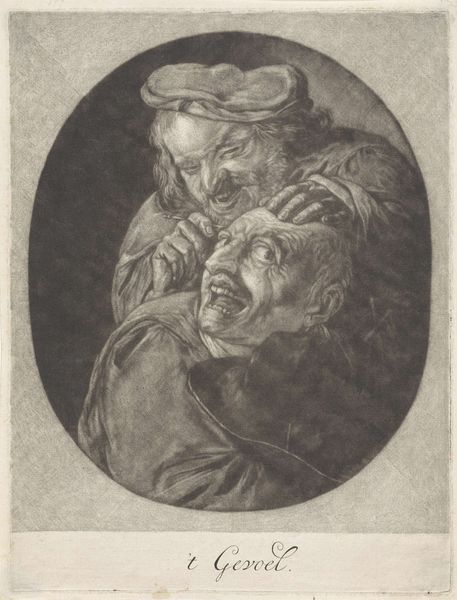
painting, oil-paint
#
portrait
#
figurative
#
baroque
#
painting
#
oil-paint
#
oil painting
#
genre-painting
Copyright: Public Domain: Artvee
Editor: This painting, titled "A Boy lighting a Candle from one held by an Old Woman" is attributed to Peter Paul Rubens. It’s quite dark, with the figures illuminated by the candlelight. I'm curious about the way the light functions, it feels like it creates the narrative itself. What strikes you most about this piece? Curator: The tenebrism is certainly notable. Look how the dramatic contrast between light and shadow defines the composition. Notice how the light source, the candle itself, dictates not only the areas of visibility but also the emotional tone. The artist isn't simply depicting a scene, they are structuring a visual experience, playing with forms created by the illumination. What do you make of the surface? Editor: I hadn't considered that. You're right. The visible brushstrokes create texture that almost feels tactile, especially in the way the light catches them. Does the candle perhaps have any symbolic meaning that Rubens might be suggesting? Curator: The candle serves multiple formal purposes. It sculpts the figures, but look closer, how the artist used the gesture of holding the candle as a focal point of this structure, an index, of sorts, where our reading starts and finds resolution. What else stands out to you in regards to form? Editor: I see what you mean. The soft lines on the old woman's face tell almost a completely different story than that of the angular composition created between the two figures, who are enclosed in darkness... It seems the very essence of the artwork stems from its very own artificial light source. Curator: Indeed. Focusing on form and materiality reveals levels of artistic intention. Rubens doesn't just present figures; the light from the candle actively dictates how we see and experience them, which structures the semiotic understanding that comes afterwards.
Comments
No comments
Be the first to comment and join the conversation on the ultimate creative platform.
